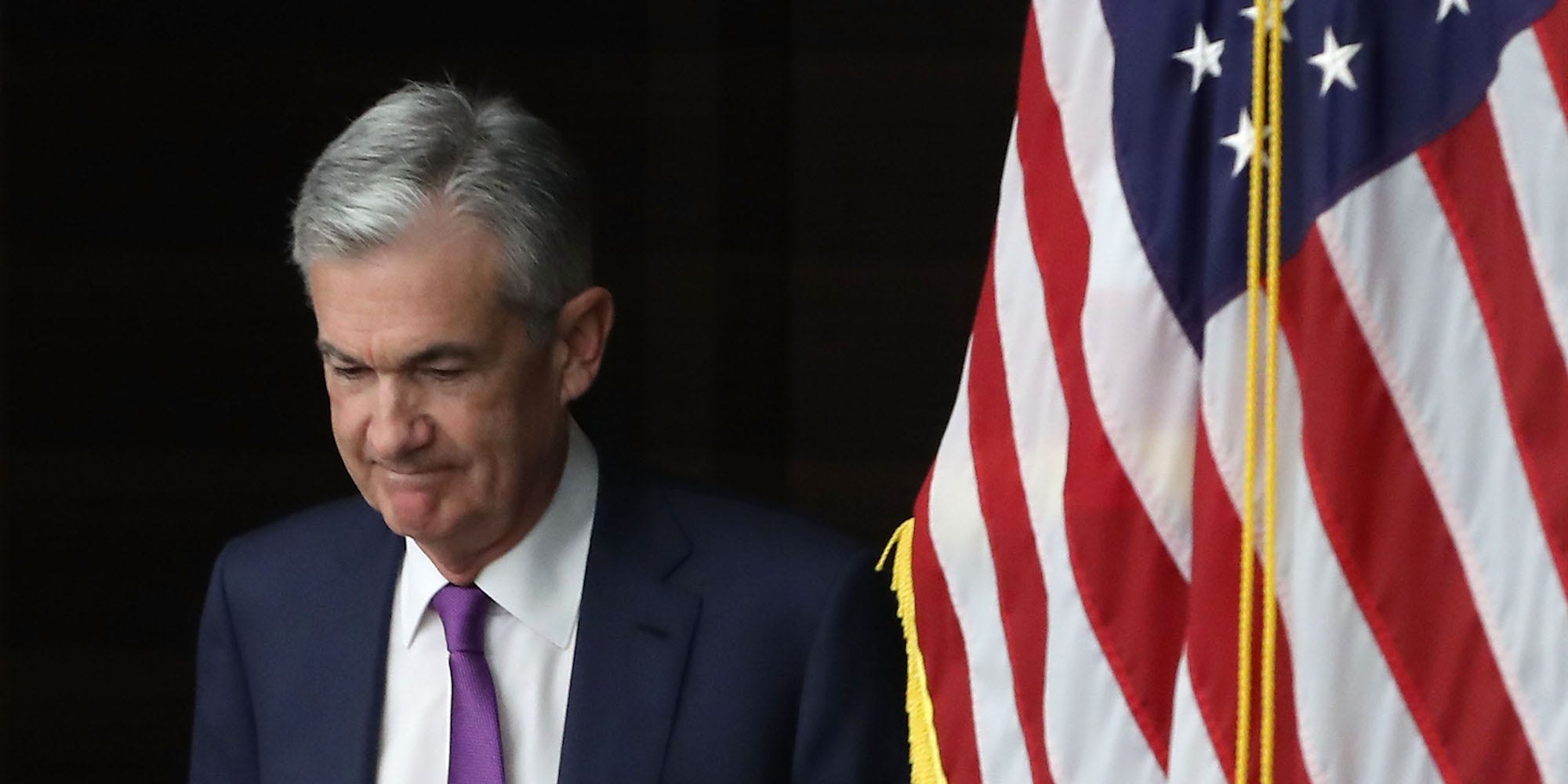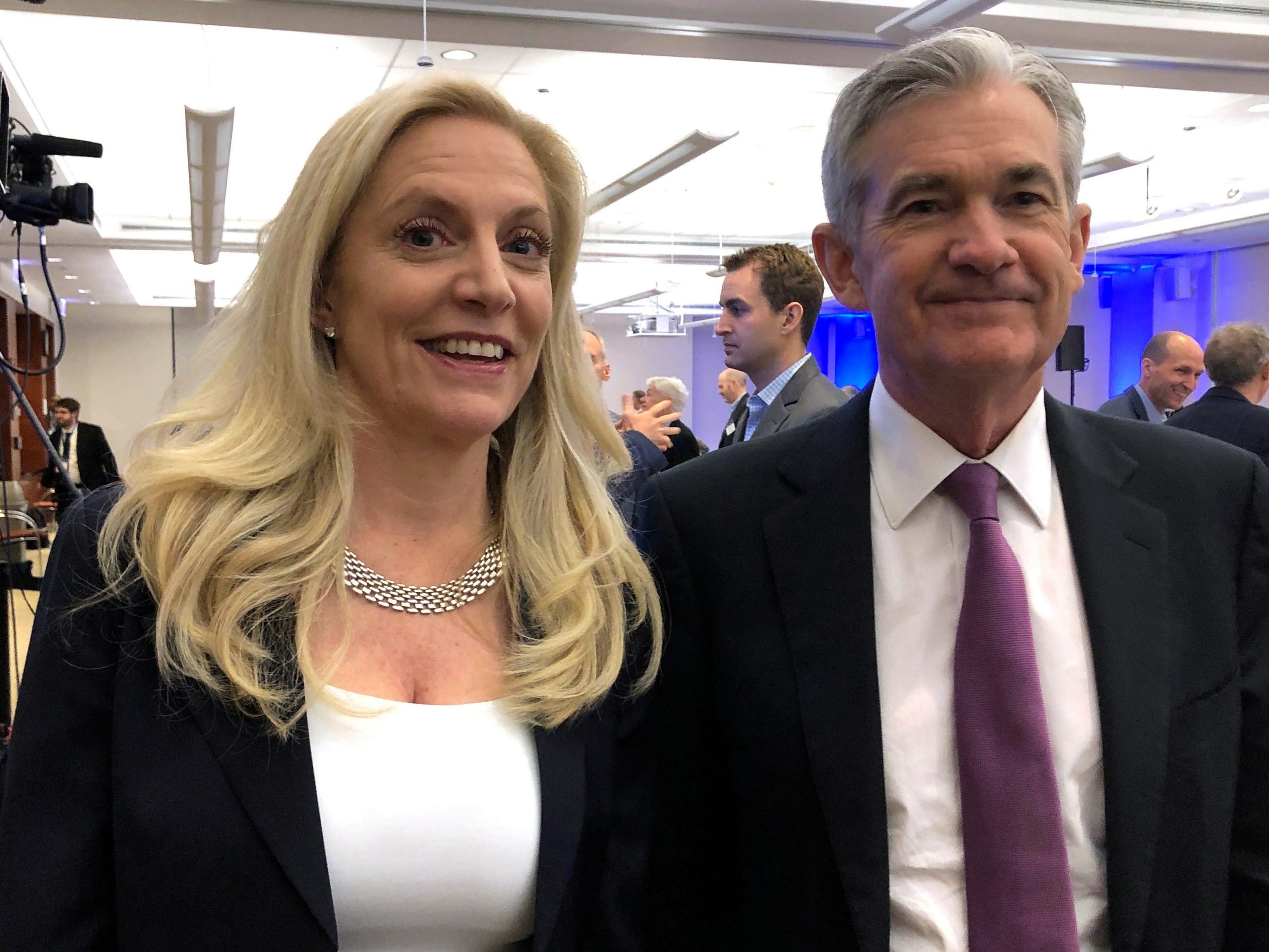
Photo by Mark Wilson/Getty Images
- Wall Street is increasingly expecting the Fed to step in and cool the volatile Treasury market.
- Yields surged in recent weeks as investors bet on growth to exceed the Fed’s projections.
- If the chaos continues without Fed action, rising yields could prematurely lift borrowing costs.
- Visit the Business section of Insider for more stories.
The Treasury market’s sell-offs caught the Federal Reserve’s attention. What the central bank does next is anyone’s guess.
The recent surge higher in Treasury yields actually followed a flurry of good news. Democrats’ massive stimulus bill, which promises to amplify consumer spending, edged closer to passage. Daily COVID-19 case counts continued to decline, and the average pace of vaccinations rose above 2 million doses per day. And economic data pointed to strength across service and manufacturing businesses.
These positive trends led investors to brace for stronger inflation and pull cash from government bonds. The 10-year yield climbed as high as 1.626% on Friday – its highest level in more than a year – after February payroll additions handily beat economist forecasts.
Fed Governor Lael Brainard – who played a major role in creating emergency lending programs during the pandemic – confirmed on Tuesday the central bank is monitoring this chaotic jump in yields.
“Some of those moves last week, and the speed of those moves, caught my eye,” she said during a webinar with the Council on Foreign Relations. “I would be concerned if I saw disorderly conditions or persistent tightening in financial conditions that could slow progress toward our goal.”
Brainard's comments suggest the sell-off could force the central bank's hand. Should yields continue to rise at such a rapid pace, borrowing costs could spike higher and counter the Fed's efforts to keep rates low.
Wall Street broadly expects the Fed to step in and pour some water on the market volatility. Yet Fed Chair Jerome Powell hasn't taken such action.
The central bank chief said Thursday that the Fed would "be patient" in waiting for inflation to trend at its above-2% target. Inflation could shoot higher through the summer as the economy reopens, but it will still take some time for price growth to steadily trend above 2% as the Fed desires, Powell said.
The economy is also far from reaching the Fed's employment target, he added ahead of the February report's release.
"Yes, 4% would be a nice unemployment rate, but it would take more than that to get to maximum employment," Powell said.
Still, he stopped short of specifically denouncing the soaring yields, only noting he "would be concerned by disorderly conditions in markets or persistent tightening."
Wall Street sees next week's Federal Open Market Committee (FOMC) meeting as a critical junction for whether the Fed dampens inflation fears or continues to let the market run amok.

Reuters
All eyes on FOMC
Everything could change on March 17, when the FOMC is set to conclude its two-day meeting and update Americans on its policy stance. Policymakers are all but certain to hold rates at zero and maintain the pace of asset purchases, but commentary around recent moves in the Treasury market and any changes to the Fed's forward guidance will be closely monitored.
The March meeting will also end in the Fed publishing its latest economic projections. The last estimates from Fed policymakers were released in December, before President Donald Trump approved a $900 billion stimulus deal and Democrats began pushing their $1.9 trillion relief plan.
The decline in daily COVID-19 cases since the December meeting could also lead the Fed to offer more optimistic projections for growth, job creation, and inflation. Updated forecasts could calm investors' speculation around the Fed's outlook and pacify the Treasury market's wild swings.
Regardless of how the Fed updates its messaging, policymakers are sure to act, Bank of America strategists led by Hans Mikkelsen said Thursday. The rates market is poised to test the Fed further in the next few days to get a more forceful response out of officials, they added.
"We expect spreads to widen and join the tightening of financial conditions ultimately forcing the Fed to respond," the team said.
Powell could provide further clarification to future policy moves as soon as next week and "certainly not later than the June meeting," Rick Rieder, chief investment officer of global fixed income at BlackRock, said Friday.
"Sometimes change is hard and sometimes policy needs to be prescribed for many; otherwise uncertainty and volatility can rule the day," he added.
Friday's encouraging payrolls report adds to the pressure the Fed is facing to rein in yields. Until the central bank can counteract tightening monetary conditions, each instance of positive economic news could fuel new market turmoil and exacerbate the rates problem, Seema Shah, chief strategist at Principal Global Investors, said.
"With real yields steadily making their way up to zero, the Fed is slowly running out of time to prove its resolve and commitment to its average inflation target," she added.
The tools in the Fed's toolbox
The central bank has a sizeable arsenal for tightening its grip on bond yields. Arguably the safest and most likely option is for Powell to offer more detailed guidance as to when it would start tightening policy. Clarifying the duration and degree to which inflation needs to run above 2% would better prepare investors for future policy shifts. Offering a stricter definition of "maximum employment" would achieve a similar effect.
If the central bank were to more directly intervene in the bond market, it could shift its bond purchases to target longer-dated notes. Doing so would place focus downward pressure on the Treasurys most commonly used to benchmark borrowing costs.
The Fed could even lift its pace of asset purchases entirely. The central bank already buys at least $80 billion worth of Treasurys and $40 billion of mortgage-backed securities each month. Increasing the amounts would likely pull yields lower across all notes, but could also stoke new concerns over the size of the Fed's balance sheet.
Likely the Fed's most extreme option would be to designate ceilings for bond yields with a policy known as yield curve control. The move involves the Fed buying as many notes as necessary to keep yields from climbing above certain levels. Yet that tool hasn't been put to use since World War II, and officials have so far strayed from seriously considering it.
The central bank could still turn to any of its unused policies if conditions worsen, but taking such steps come with their own risks, Patrick Harker, president of the Federal Reserve Bank of Philadelphia, said Wednesday.
"At this point, I am firmly committed to holding where we are. When you are in the middle of the crisis, the fewer things you can change, the better," Harker said, according to MarketWatch.
Dit artikel is oorspronkelijk verschenen op z24.nl
